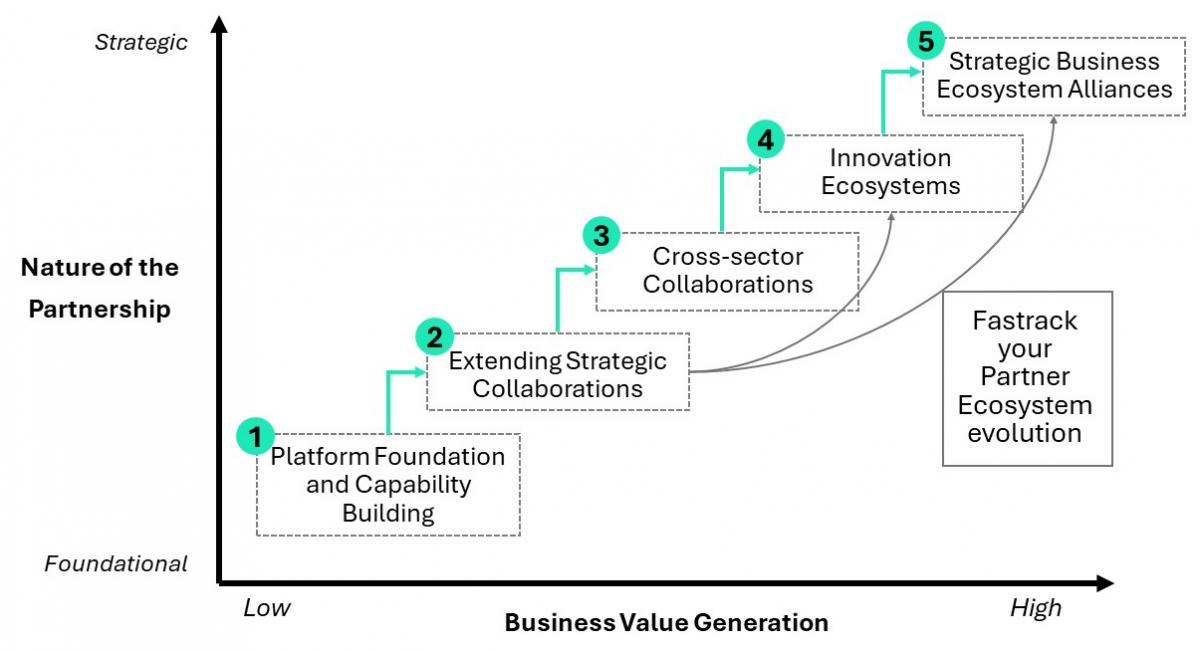Control Room of the Future

Having struggled to address key systemic issues in isolation, executives are considering solutions involving partnerships and an operating approach enabled by collaboration. A Partner Ecosystem helps engage and entrust the best partners to tackle these issues and maximise collective value.
Complex multi-party issues demand bold solutions. Ecosystems provide an effective way to resolve complex business challenges by connecting effectively across traditional boundaries between firms and industries. In a rapidly evolving business landscape, organisations that leverage the power of ecosystems will achieve outstanding results and growth.
We worked with a major Gas Network operator to adopt an ecosystem approach to reduce harm from Carbon Monoxide poisoning. Councils, Emergency Services and Charities amongst others shared their perspectives on the problems encountered. New connections were made, and a new integrated approach was designed and piloted.
This will help reduce the risk of harm from Carbon Monoxide poisoning and save lives.
Sia Partners focuses on five key factors to design and establish effective Ecosystem solutions:
Interconnectedness – a high degree of innovative collaboration to form unique networks to achieve outstanding results
Collaboration over Competition – offers new potential value from collective success
Value Creation through Network Effects as a multiplier of project benefit
Open Innovation in ideas, expertise and resources beyond a single organisation
Customer-centric focus considering the entire customer journey and experiences. Finding innovative solutions within a broad Ecosystem collaboration
Your Partner Ecosystem capability can evolve as the nature of its partnerships more strategic and the business value generation increases. There are five ecosystem stages (shown below). Building from the foundation, a company can build and extend incrementally to achieve more advanced forms of the ecosystem. Alternatively, you can fast-track your solution to generate greater business value in a shorter time.
New technology advances such as Internet of Things and the decentralized web (Web3) are enabling more efficient collaboration and multiplying the network benefits. This is very relevant in the achievement of Environmental, Social and Governance objectives.

Platform foundation and capability building – more transactional, early stage that may involve exploring options and small “demonstrator” projects.
Extending strategic collaboration – beyond transactional and into sustaining, projects have very specific scope or theme.
Cross-sector collaborations – truly collaborative relationship that drives value creation through the use of new channels, the combination of services and the inclusion of wider areas of operations.
Innovation ecosystems – focused on new and disruptive innovation with complementary partnerships that allow for co-creation and strategic outcomes.
Strategic Business Ecosystem Alliances – cross-sector collaboration in an alliance and sharing model which uses joint innovation activities and resembles a new and distinct business model rather than discrete projects.
Sia Partners follows a structured four-step approach to enable your organization to launch the most appropriate Partner Ecosystem with a high degree of confidence. The key stages are;
Opportunity mapping and engagement: explore problems, assess potential value & early engagement of likely partners
Ecosystem foundation and collaboration: co-design ecosystem model, funding and partner commitment
Ecosystem launch and scale: launch “demonstrator” projects and scale up based on value
Business Ecosystem embedding establish the extended operating model and embed optimisation process and structures
If you would like to learn more about our Partner Ecosystem offer, latest experiences and our credentials in this area, please do not hesitate to reach below.
The client: A UK Water Utility responsible for providing water and wastewater services across Scotland.
The ask: The client had made commitments to reach net zero emissions by 2040. Key to meeting this is tackling scope 3 emissions – of which approximately 18% are attributable to concrete usage. However, this wasn’t something the client had direct control over or could do alone – it required collaboration across the supply chain, influencers and the wider industry.
Our Approach:
The Outcome:
The client: A UK Water Utility responsible for providing water and wastewater services across Scotland.
The ask: Our client was looking to develop a framework and playbook for a new approach to Partnering that would enable them to solve key challenges in collaboration with Partners.
Our Approach:
The Outcome:
The client: Cadent, a leading British regional gas distribution company, operates and maintains the UK’s largest natural gas distribution network.
The ask: Our client sought to address fuel poverty by establishing a partner ecosystem that integrates various funding sources, best practices, and delivery mechanisms. The goal was to offer a comprehensive suite of fully-funded measures: financial aid, energy efficiency improvements, and low-carbon technology to support fuel-poor customers.
Our Approach:
The Outcome:
The client: A British multinational energy company that supplies electricity and gas to millions of customers in the UK and Ireland. It focuses on energy production, distribution, and related services.
The ask: Our client was looking to accelerate the growth of its DE business through partnership channels but needed to define the strategy & develop a scalable framework.
Our Approach:
The Outcome:
The client: A leading global defence, aerospace, and security company, providing advanced technology solutions for air, land, sea, and cyber domains. Headquartered in the UK, it delivers innovative products and services to governments and commercial customers worldwide.
The ask: Our client wanted to secure its future growth by building a Smart Transport ecosystem to offer data-driven insight to the transport industry.
Our Approach:
The Outcome:
The client: Consortium of 16 of the major UK Water Companies.
The ask: Many water companies have been bringing data and people together to innovate for some years now but this has largely been in a shared sense and whilst the model has delivered some benefit it can’t and doesn’t scale. Stream (a consortium of 16 Water Companies) funded by the Ofwat Breakthrough Challenge sets out to unlock the potential of water data to benefit customers, society and the environment. It will achieve this by setting up a data-sharing infrastructure to drive consistency across the sector.
Our Approach:
The Outcome: